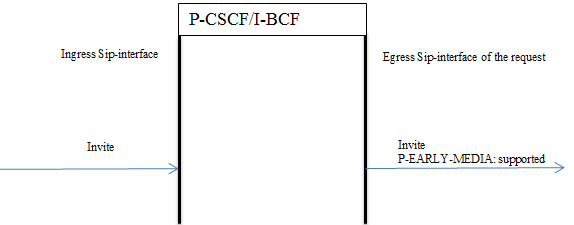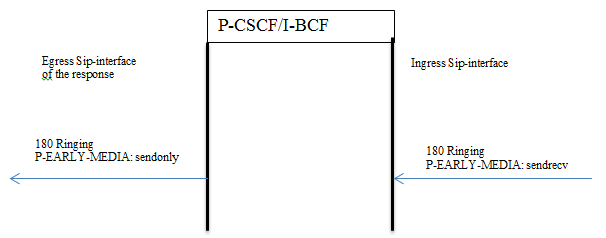Functional Design
Acceptance of and authorization for early media is accomplished with two new ACLI parameters -- p-early-media-header and p-early-media-direction, which are added to SIP interface configuration in Version S-CZ7.2.0 and later releases.
The p-early-media-header parameter will enable the feature when the value is set to either “add” or “modify”. The p-early-media-header and p-early-media-direction should be configured on egress interface of the incoming message. The values for parameter p-early-media-direction are “sendrecv, sendonly, recvonly, inactive”. It is a list and each configured value corresponds to the m-line in the SDP. If the number of configured values is more than the number of m-lines in the SDP, the excess configured values are ignored. If the number of configured value is less than the number of m-lines in the SDP, the last configured value is used for all the m-lines.
The following illustrations show the ingress and egress sip-interface configuration.

Figure 5-2 180 RINGING Specifying p-early-media Support

P-Early-Media headers in Re-Invites are ignored. If the SDP contains Content-Disposition: early-session the P-Early-Media header is ignored.
Endpoint is considered trusted or untrusted based on the configuration on the ingress sip-interface of the P-CSCF. Sip-interface has the configuration parameter “trust-mode”. If the “trust-mode” is set to “none” then nobody is trusted in sip-interface. By default the value is “all”. Possible values are <all, agents-only, realm-prefix, registered, none>.
For multiple dialogs due to forking, P-CSCF will identify the media associated with a dialog, and then setup early media flow for the selected media. The configuration elements restricted-latching in realm-config, and latching in media-router should be enabled.
The following 3 tables detail early media implementation details.